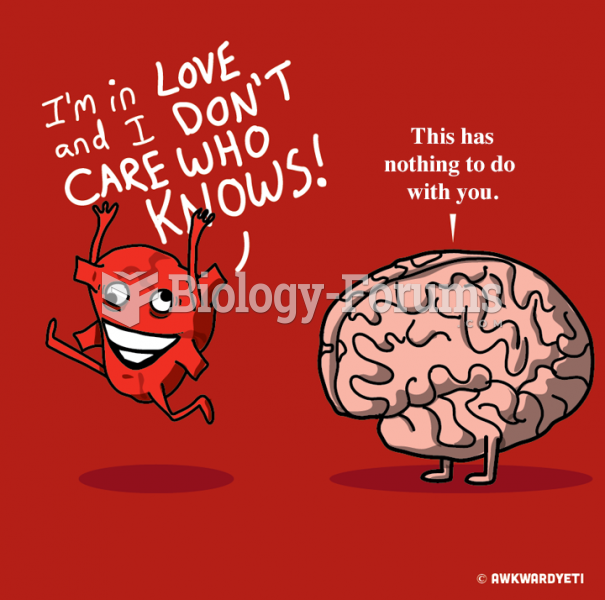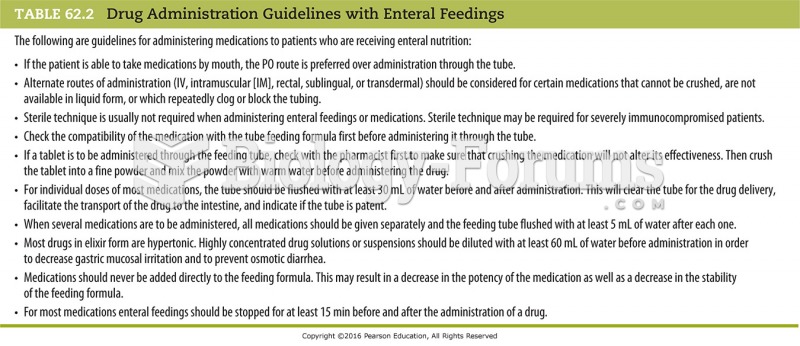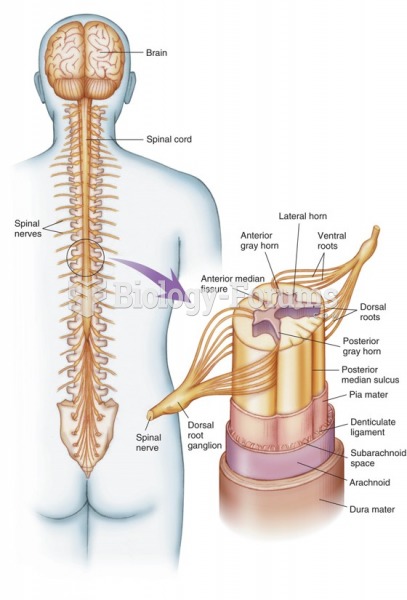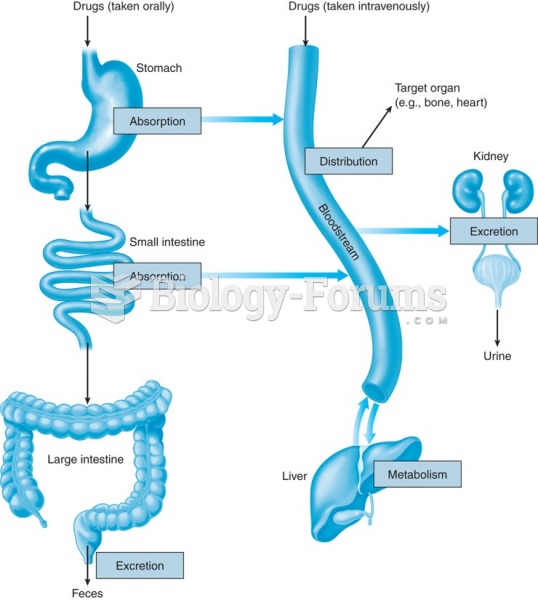|
|
|
The average human gut is home to perhaps 500 to 1,000 different species of bacteria.
After a vasectomy, it takes about 12 ejaculations to clear out sperm that were already beyond the blocked area.
Children with strabismus (crossed eyes) can be treated. They are not able to outgrow this condition on their own, but with help, it can be more easily corrected at a younger age. It is important for infants to have eye examinations as early as possible in their development and then another at age 2 years.
About 100 new prescription or over-the-counter drugs come into the U.S. market every year.
The first successful kidney transplant was performed in 1954 and occurred in Boston. A kidney from an identical twin was transplanted into his dying brother's body and was not rejected because it did not appear foreign to his body.






